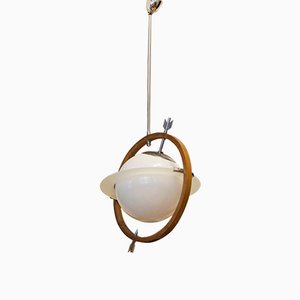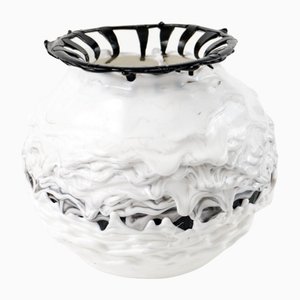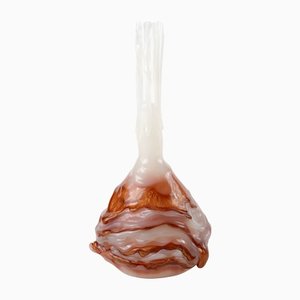The robots are coming!
Mensch Machines
Eyes follow you, and then blink slowly. The mouth curves slightly upwards in a placid smile while the head tilts queryingly to one side. But something isn’t quite right about the movements; there’s a deliberateness to them that’s suspiciously too studied. Confronted with something that’s clearly not human but that looks and acts too much like a human, you find yourself in an eerie emotional hinterland, ameliorated only slightly by the cognitive understanding that the thing before you is not an imposter, not a threat to your safety, as the remnants of your lizard brain are busy postulating. It’s just an elaborate assemblage of synthetic materials, mechanical parts, and programmed electronic circuitry.
We’re coming up on a century since the word “robot” first entered our vocabulary through a piece written by Czech playwright Karel Čapek in 1920. The object of both utopian hopes and dystopian angst ever since, the trope of the non-organic humanoid is a fascinating lens through which to explore humanity’s attempts to understand itself and its uneasy dependence on technology. From clunky tin men and sci-fi villains to ubiquitous yet nearly invisible facilitators of modern life—and, more recently, networked “beings” that exist disembodied online—the role that design has played in the evolution of robots is currently being celebrated more than ever. Just look to newly published books like Max Aguilera-Hellweg’s Humanoids; a number of films, including Werner Herzog’s much anticipated Lo and Behold; and the spate of robot-themed exhibitions recently mounted at museums, from Chicago and London to Tokyo.
One current blockbuster exhibition, Robots, at the Science Museum in London, focuses on humanoid robot designs throughout history. Curator Ben Russell explains that these “robots remind us about who we are because they’re basically mirrors...” And he’s right. There’s so much about human history that can be read in the technological golems we create. The awkward metal suits of armor of early robots like Eric, the first British robot that made its public debut in 1928, clearly reflected the aesthetics of the industrial revolution at the time: an inter-war, brute-force approach to technological progress; steel, combustion, and simple mechanisms. The postwar era, in contrast, saw the design aesthetic shift dramatically towards the smooth, molded forms that were made possible by the new wonder-material plastic and the aero-dynamism of the space age. Since the turn of the 21st century, however, there has been an even more fundamental shift. The Internet and our entanglement with digital devices have brought about giant super-networks. Now we can expect our robots—whether in physical form like the Kuri home robot, or purely digitally, like Siri or Alexa—to be responsive and intelligent; to learn from our interactions and provide ever more seamless service. As the boundaries between human needs and technological possibilities continue to blur, humanoid robots are becoming more humanlike—such as renowned robotics researcher Hiroshi Ishiguro’s Geminoids—and humans are, in turn, becoming more cyborg.
The exhibition Hello, Robot—which closes soon at Vitra Design Museum before touring to MAK Museum für Angewandte Kunst, Design Museum Gent, and Gewerbemuseum Winterthur through 2018—covers a spectrum of work at the intersection of design and robotics from the last century to today. Particularly quaint are the displays of robots from the 1950s, ’60s, and ’70s, including toys, products, and pop culture icons that, at the time, represented the space-travelling future. Picture the classic boxy, 8-bit-looking robots that we know from our childhoods and replicated with our homemade cardboard-box-and-tin-foil Halloween costumes, or the version we probably see most often today, the robot emoji. Of course these anthropomorphic robotic friends and foes never made it out of the realm of novelty in the 20th century.
Today all kinds of robots work for and with us, but not as the metallic humanoid butlers that had been forecasted in the 1940s. And their colonization of our world certainly hasn’t been a wholesale, hair-raising invasion as movies from Flash Gordon (1936) to Terminator (1984) made us fear. Instead, it’s been a quiet, steady march of increasingly impactful “helpers,” starting with robotic arms, automatized factory assemblers, and aides to the disabled, onward toward AI prototypes, micro-surgeons, space explorers, and self-propelled tools for domesticity like the Roomba or Yves Béhar’s bionic Ori interiors. One technological advancement after the other has been a continuous feedback loop between human and machine, driven by a symbiotic relationship between theorists, artists, engineers, scientists, tinkerers, and designers, all in an effort to make life easier and easier. Hello, Robot succinctly asks visitors the question: “Could a robot do your job?” The real threat posed by the robot revolution has turned out to be our own underemployment and, maybe, obsolescence.
Dublin’s Science Gallery is currently exploring this same anxiety with Humans Need Not Apply. For this institution, the heart of our contemporary disquiet is this: “Will the notion of work transform completely if machines really can do everything better, faster, and for longer? Are we hurtling together towards a leisure-time utopia or robot-tended human zoos?” The show delivers on this provocation with projects like Driessens & Verstappen’s Tickle Salon (2002-2017), a robotic installation in which the participant undresses, lays down on a bed, and lets an algorithm-driven soft brush caress his or her body—simulating the pleasant sensation of laying in a field of grass on a warm summer day. Another fun one: Lady Chatterley’s Tinderbot (2016) created by Libby Heaney. Here you'll find an artificially intelligent Tinderbot posing as characters from Lady Chatterley’s Lover in conversation with other IRL Tinder users. Robots, it seems, can replace us in both work and play.
But what if the real question is not whether robots will make life as we know it better or worse, but rather can we (the humans) become something more than we are? Can we evolve with the help of robotic technology and AI? Vitra’s Hello, Robot also features artist Susanna Hertrich’s speculative designs, which, in her words, are “prosthetic devices for the modern psyche,” imagining handheld technological aids that enhance human sensory systems, instincts, and emotional responses to make us better adapted to our 21st-century context. There’s also Anouk Wipprecht’s visually arresting “fashion-tech” wearable design pieces, which she describes as technological couture, drawing on developments in AI to interact “as 'host' systems on the human body” through fantastical designs that “move, breath, and react to the environment around them.” Her 3D-printed Spider Dress (with Intel Edison Microcontrollers) detects physical threats to the wearer and moves to ward off unwanted encroachment. As potential attackers approach, the wearer’s own breath helps to signal the defense posture of the dress's robotic arms. When oncomers move too quickly, the arms aggressively strike out.
The impetus for technological advancements in robotics has always been a quest for higher quality of life; or, as Science Gallery Dublin curator Rachel Armstrong has said: “at the heart of every technology is a wish.” We’re living through an era in which the world is beginning to feel rather like the set up for a dark sci-fi novel. We’ve got all the tropes from environmental degradation and self-driving cars to an ageing population and widening economic disparities. Whether artist or engineer, scientist or theorist, those who design robots try their hand at creating a better future. These days, it’s hard to think of any other area of design that carries such responsibility or—depending on how you look at it—hope.
With special thanks to Vitra Design Museum; Science Museum, London; Science Gallery, Trinity College, Dublin; and Museum of Science & Industry, Chicago.
-
Text by
-
Gretta Louw
A South-African born Australian currently based in Germany, Gretta is a globetrotting multi-disciplinary artist and language lover. She holds a degree in Psychology, and has seriously avant garde leanings.
-





